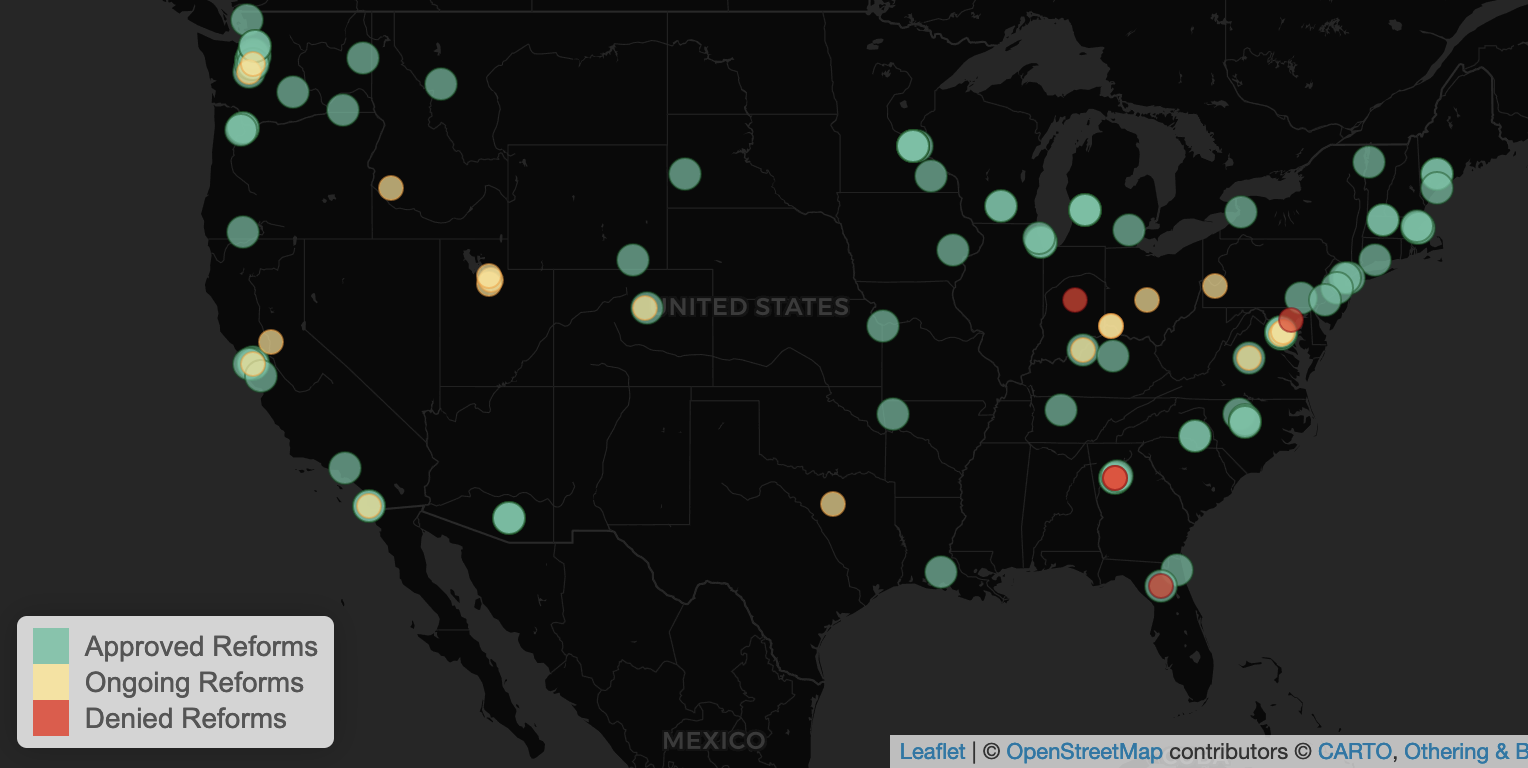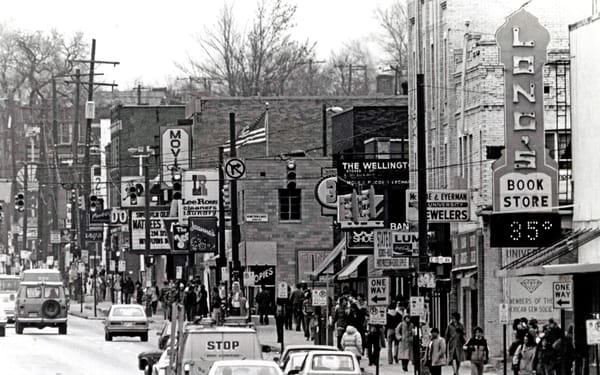Public engagement for 'Zone In Columbus' is ramping up!
And some thoughts on the housing approval process

Spring is in the air, and so is zoning reform. The push to rethink how we permit and produce housing in our growing region is gaining steam, and now is the time to get involved.
Whether you live in the city of Columbus or another part of Central Ohio, your pro-housing advocacy is absolutely crucial to changing the narrative from one that opposes new neighbors to one that welcomes new residents.
Our current planning and development system is driven by developers themselves, rather than a community vision.
The system relies on variances—exceptions to largely outdated regulations—to produce housing. A healthier housing system would lay out flexible rules of engagement for housing production on the front end, allowing developers to pick their approved pathway to construction. Unpredictable approval timelines and contentious community input processes extend the development process in a way that favors larger developers who can weather delay. For smaller and less resourced developers, the risk to build much-needed housing is often too much to bear.
Part of zoning reform, then, is about more than what structures we allow and where.
It’s about how housing for our (new and old) neighbors gets proposed, reviewed, and approved.

Head to a “Community Conversation” in May or June
The Zone In project team will host community conversations around a number of zoning topics throughout the life of this project. These conversations will provide an opportunity to learn, discuss and ideate around many different aspects of zoning.

In case there’s opportunity for input please keep these zoning reform suggestions in your back pocket:
- Allow duplexes, triplexes, and other medium-density (i.e. “missing middle”) housing in all neighborhoods *by right*, meaning without variances
- Eliminate parking requirements, instead shifting to parking maximums
- Offer fast-track approvals for projects with affordable housing units
- Simplify approvals for accessory dwelling units (ADUs) used as long-term residences throughout the city
- Modernize the role of area commissions in approving housing
- Create special permitting pathways for non-market and de-commodified housing
- Re-examine height restrictions, especially along transit corridors
- Prioritize/expedite approval process for projects that increase housing stock (as opposed to projects removing housing units)
- Create simplified permit pathways for innovative housing options like co-living, cooperative residences, and tiny homes
- Diversify housing voices in public participation and (e.g. area commission approvals) and consider the housing needs of future residents, not only current homeowners
📚 The Book Beat

Homelessness is often discussed in terms of individual barriers, but a new book connects the rise of unsheltered people to housing financialization and the real estate market.
Colburn, G., & Aldern, C. P. (2022). Homelessness is a Housing Problem: How structural factors explain U.S. patterns. University of California Press.
While individual vulnerabilities are important when considering contributing factors to the unhoused population, this recent book takes a macro-level approach to homelessness by analyzing structural factors of the housing market. The authors of Homelessness is a Housing Problem use regression to test the influence of various factors on the unsheltered homeless population in major U.S. metropolitan areas, finding that the primary factor is the regional housing market.
The conclusions of the book are, oddly, both expected and unexpected. We might expect homelessness to be higher in regions with higher housing costs.
We might also expect that regions with higher poverty levels would see higher rates of homelessness. But that’s not the case, considering that high poverty regions are more likely to have low housing costs. Thus, the authors conclude that “homelessness thrives amid affluence, not poverty” (Colburn and Aldern, 2022, p. 81).
While the book isn’t focused on homelessness reduction strategies at the individual level, the authors provide a review of literature showing that the most effective ways to reduce homelessness among single adults are “permanent housing programs with voluntary support services” (p. 65). In this vein, the authors suggest that building more housing is a primary strategy to assist the unsheltered population, while acknowledging the need to simultaneous investments in immediate ameliorative actions.
“The point is that the housing market as a whole helps create the conditions in which homelessness varies from region to region. It’s not merely a shortage of low-income housing: It’s an overall housing shortage that matters. (Colburn and Aldern, 2022, p. 134).
Despite their assertion that building housing in general is important, the authors realize that “Housing doesn’t magically ‘filter’ or trickle down to low-income households” (p. 134).
Ultimately, they recommend removing a certain portion of housing stock from the market, largely for those people with little income because the “tool of the private market is not well-suited to the task” (p. 172). Non-market housing options, the authors say, are necessary to house people “with the lowest incomes” through strategies such as “public and nonprofit ownership of a portion of the multifamily housing stock” (pp. 173-174). Simply put, “housing must be de-commodified.”
🇺🇸 Zoning reform efforts are happening all around the country 👏

The Othering & Belonging Institute at UC Berkeley maintains a Zoning Reform Tracker to share information on municipal zoning reform efforts across the U.S. Featuring two components, a database and a webmap, the tracker is an exceptionally useful tool for judging the location, status, and substance of zoning reform initiatives.
🗞️ Recent Housing News + Discussions 🏘
Local
- Opinion: Columbus doesn't have to be the fastest growing urban heat island
21 April 2023, Columbus Dispatch - Census: Columbus region growth mitigates Ohio's population decline
18 April 2023, Columbus Dispatch - More than half of Columbus millennials are homeowners
17 April 2023, Axios Columbus - 'Pushing our comfort zone:' First-time Columbus homebuyers face short supply, high prices
14 April 2023, Columbus Dispatch - Columbus plans long-needed zoning overhaul
13 April 2023, Columbus Dispatch - Columbus homes still rising in value ... but not by much
12 April 2023, Columbus Dispatch - Growing vertical: See where in Columbus leaders have identified for denser development
6 April 2023, Columbus Dispatch - Home-flipping rises to record level in Columbus and across Ohio
25 March 2023, Columbus Dispatch
National
- A Plan to Force More Housing Development in New York Has Failed
21 April 2023, The New York Times - Opinion: The 100-Year-Old Reason U.S. Housing Is So Expensive
14 April 2023, The New York Times - The Democratic Senator Who Says Liberals Have Lost Their Way on Housing
3 April 2023, Slate - Single-Stair Layouts Are Not Going to Fix the Housing Crisis
31 March 2023, The Nation - Can New York Fix Its Housing Crisis? It Depends on the Suburbs
29 March 2023, The New York Times




